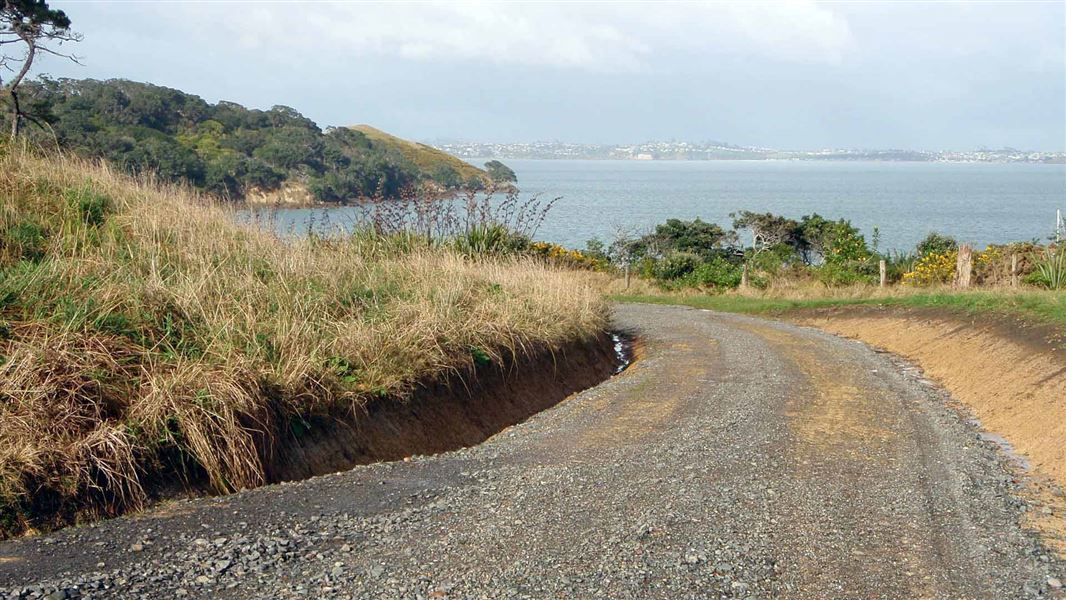
Introduction
Motuihe Island/Te Motu-a-Ihenga has a varied history of Maori and European settlement, and was used for quarantine and military purposes.Māori history
Archaeological evidence so far observed and recorded indicates that Motuihe was likely settled at the time of early Polynesian settlement around the thirteenth century AD.
There are approximately 63 recorded archaeological sites on Motuihe which relate to Māori settlement including quarrying sites, crop storage pits and two pā called Te Rae o Kahu, Mangoparerua and Te Tumurae.
Early land transactions and farming
Between 1837 and 1840 the island was sold four times, resulting from a change of Māori ownership to European. The motu was then farmed from 1843-1872, until it was purchased for a quarantine station in 1872. The island was farmed with horses, cattle, pigs , fowl and game.
Quarantine station 1872 – 1941
Following the arrival of ships with cases of smallpox on board into Auckland Harbour, Motuihe was purchased on 24 December 1872. While the entire island had originally been set aside for the human quarantine station, the quarantine complex was constructed at the smaller northwestern end of the island, with the larger eastern end of the island used for animal quarantine.
The quarantine station and its structures were in use from 1918 to 1941, first to house the Spanish Flu soldiers then as a health camp for children. It was abandoned from about 1933 to until 1941 when the NZ Navy it took over.
World War I – Internment Camp
During the First World War, the Motuihe Quarantine Station was repurposed as an internment camp. It was first used as a camp for ‘first class’ prisoners, women and children, while those of the ‘second class’ and destitute were sent to Somes Island in Wellington. As the war progressed ‘working class’ prisoners were also interned on Motuihe.
The most famous prisoners were Captain Count Felix von Luckner and his crew who were interned in 1917. Von Luckner undertook the daring and successful escape from the island in 1917 and was able to reach the Kermadec Islands before being captured.
By the end of the war in early 1918, 81 prisoners had been interned on Moutihe. The arrival of the Spanish Flu epidemic that was spread through the returning soldiers resulted in the internment camp being closed and Motuihe being returned to a quarantine station again.
World War II – HMNZ Tamaki 1941-1963
After the outbreak of World War II, Motuihe was chosen as the location of a self-contained naval training establishment. It was commissioned on 20 January 1941 and named HMNZS Tamaki. Buildings were constructed or extended, new equipment was added, and the water supply, drainage, roading, and other amenities were improved.
From January 1941 until the end of the war, more than 6000 recruits, representing about 60% of the New Zealanders who saw active naval service during the war, passed through Tamaki. After the war HMNZS Tamaki continued to operate as a shore training establishment, and the site was formally gazetted for defence purposes in 1951.
1945 to present
Public access to Motuihe again became available in the summer of 1948-1949 after joint use with the Navy had been negotiated. A decision was made to return the island for use as a recreation reserve.
Most of the former navy buildings were subsequently demolished. A small number of other buildings were moved to other parts of the island or retained for use on site.
Control of Motuihe passed to the Hauraki Gulf Maritime Park Board in 1968 and then to DOC who continue to manage the island.
More information
Motuihe Quarantine Station (1870-1930), HMNZS Tamaki (1941-1963): Heritage assessment (PDF, 1092K) 2006